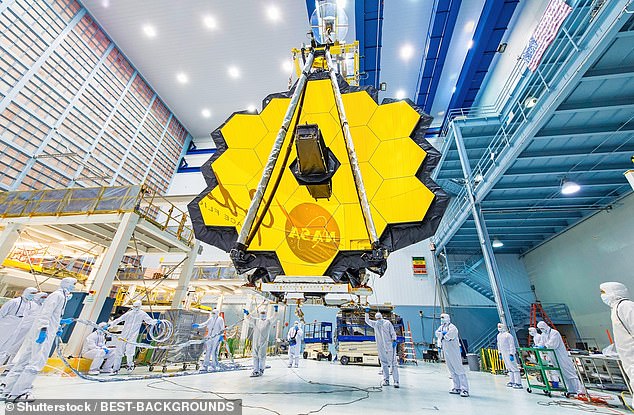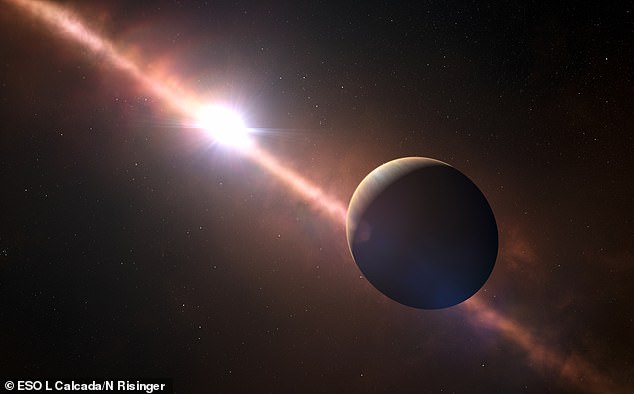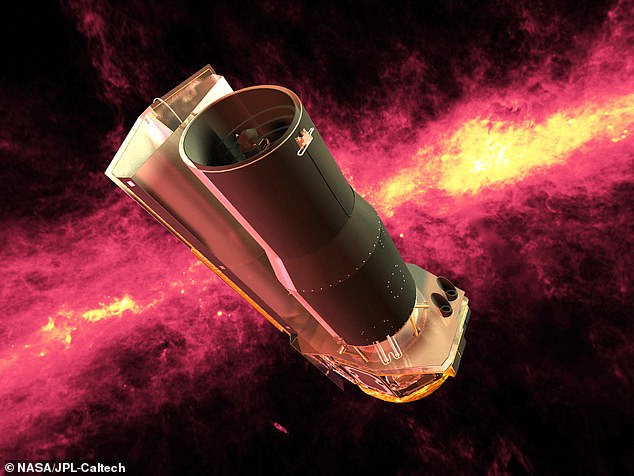‘Cataclysmic’ collision of giant asteroids is discovered by NASA’s James Webb Space Telescope around a nearby star – and it only happened 20 years ago, scientists say
NASA’s James Webb Space Telescope was built to ‘look back in time’, as far back as 13.5 billion years ago – but the latest discovery is surprisingly recent.
Just 20 years ago, a collision occurred between two asteroids orbiting Beta Pictoris, a star 63 light-years from Earth, the $10 billion observatory reveals.
This “catastrophic” impact pulverized the two rocky bodies into fine dust particles “smaller than pollen or powdered sugar,” astronomers say.
Collectively, these dust grains were about 100,000 times the size of the asteroid that killed the dinosaurs about 66 million years ago.
In our own solar system, asteroids collide with each other and even planets, posing a threat to life forms – although as it stands there are no known worlds around Beta Pictoris that could host aliens.
Two different space telescopes took snapshots of the same area around a star called Beta Pictoris twenty years apart. Scientists theorize that a huge amount of dust detected by the Spitzer Space Telescope in 2004 and 2005 indicates a collision of asteroids that had largely disappeared by the time the James Webb Space Telescope captured its images in 2023.

NASA’s James Webb Space Telescope (pictured) was built to ‘look back in time’, as far back as 13.5 billion years ago – but the latest discovery is surprisingly recent
Beta Pictoris – which is almost twice as massive as our Sun and more than eight times as luminous – has long been of interest to astronomers because it is relatively young.
Our sun is 4.5 billion years old, but Beta Pictoris is only 20 million years old – and this is a key epoch when giant planets have formed, but rocky planets can still develop around them.
Scientists have already confirmed the presence of two gas planets, Beta Pictoris b and Beta Pictoris c, orbiting it, but any rocky planets have yet to be discovered.
“Beta Pictoris is at an age when planet formation in the terrestrial planetary zone is still ongoing through collisions with giant asteroids,” said Christine Chen, an astronomer at Johns Hopkins University in Baltimore, Maryland.
“So what we might be seeing here is actually how rocky planets and other bodies form.”
It’s been 20 years since NASA’s now retired Spitzer Space Telescope observed a “massive amount of dust” around Beta Pictoris.

Artist’s impression shows gas planet Beta Pictoris b in the foreground orbiting its star (Beta Pictoris)

Spitzer (artist’s impression) was one of NASA’s four Great Observatories – large, powerful astronomical telescopes in space launched between 1990 and 2003
Along with Hubble, Compton and Chandra, Spitzer was one of NASA’s four Great Observatories: large, powerful space telescopes launched between 1990 and 2003.
At the time, it was thought that the dust around Beta Pictoris came from a constant stream created by two small rocky bodies rubbing against each other.
But after studying the same area 20 years later with the James Webb telescope, Chen and colleagues found that the dust had disappeared.
They think a massive collision between two asteroids created the ultrafine dust grains, which gradually spread into space.
“We think all that dust is what we initially saw in the 2004 and 2005 Spitzer data,” Chen said.
“With Webb’s new data, the best explanation we have is that we have in fact witnessed the aftermath of a rare, cataclysmic event between large asteroid-sized bodies.”
If rocky planets exist orbiting Beta Pictoris, they have yet to be found – or yet to form.
But the findings suggest that this distant system may be undergoing a similar process of planetary formation as our solar system went through more than 4 billion years ago.
In young solar systems like Beta Pictoris, “early turmoil” can affect the atmosphere, water content, and other important aspects of habitability that may eventually develop on their planets.
The team also tips its hat to Spitzer, without whom the dust from the collision would not have been detected.
“Most of the James Webb Space Telescope’s discoveries come from things the telescope detected directly,” said co-author Cicero Lu, a former Johns Hopkins doctoral student in astrophysics.
“In this case, the story is a little different, because our results come from what James Webb didn’t see.”
The new insights will be presented Monday during the 244th meeting of the American Astronomical Society in Madison, Wisconsin.
